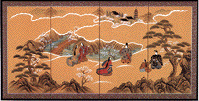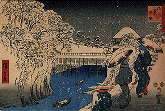Japanese Gardens
 Here are some photographs of Japanese gardens, recently sent to me (by Shawn Tribe my colleague at the I do not remember what we were discussing (no doubt something seriously liturgical!) when as a complete non-sequitur he started sending a string of photos to me with a ‘How do you like these?’. He said he had just found them and thought they were beautiful and that was his only justification for sending them.
Here are some photographs of Japanese gardens, recently sent to me (by Shawn Tribe my colleague at the I do not remember what we were discussing (no doubt something seriously liturgical!) when as a complete non-sequitur he started sending a string of photos to me with a ‘How do you like these?’. He said he had just found them and thought they were beautiful and that was his only justification for sending them.
I do not know anything about the Japanese philosophy of gardening and so haven’t got much to offer beyond the photos themselves – I post these for sheer enjoyment. Looking at them though, there is so much more to these than the Zen raked-gravel-with-single-profound-boulder garden (typical of many of the ‘Japanese’ recreations in Western museums that I have seen). My uninformed speculation is that they reflect a desire to create idealised rural landscapes - a sense of what nature ought to be. In this respect not dissimilar to the 18th century English landscaped gardens of designers such as Capability Brown.
The following passage is taken from a website produced by Columbia University, If it is a fair overview, then it what it describes is consistent with the Christian belief that the untamed wilderness is not the perfect standard of beauty (which is what so many modern Westerners seem to believe). Rather, that man, through God’s grace (for the Christian) can improve the wilderness and mould it into something closer to what it ought to be. Buildings, therefore, are not to be thought of as unnatural aberrations but (provided they are built well) as another aspect of properly ordered nature.
 |  |  |
I do not know the location of every picture. I give details for those that I do.
Kinkakuji Temple, Kyoto, Japan
And, having been so rude about Western attempts to recreate Japanese gardens, here is one that proves me wrong! It is at the University of British Columbia.
Perhaps the maples shown in the last photo are not Japanese but Canadian. It reminds me of a story from when I was eleven. We had a beautiful ornamental Japanese maple in our garden at home. I used to ask my dad about it so often that as a joke he taught me the Latin name for it - acer palmatum dissectum atropurpureum. I can remember him laughing when I parroted the phrase back at him. About a week later I was in the garden of a family friend who by coincidence was watering a red-leafed Japanese maple that looked just like the one at home. ‘Ah,’ I said solemnly. ‘I see you have an acer palmatum dissectum atropurpureum.’ He looked at me in astonishment. What an insufferable little boy I must have been. (And before anyone says it, still am no doubt!)fashioninn4us.blogspot.com









No comments:
Post a Comment